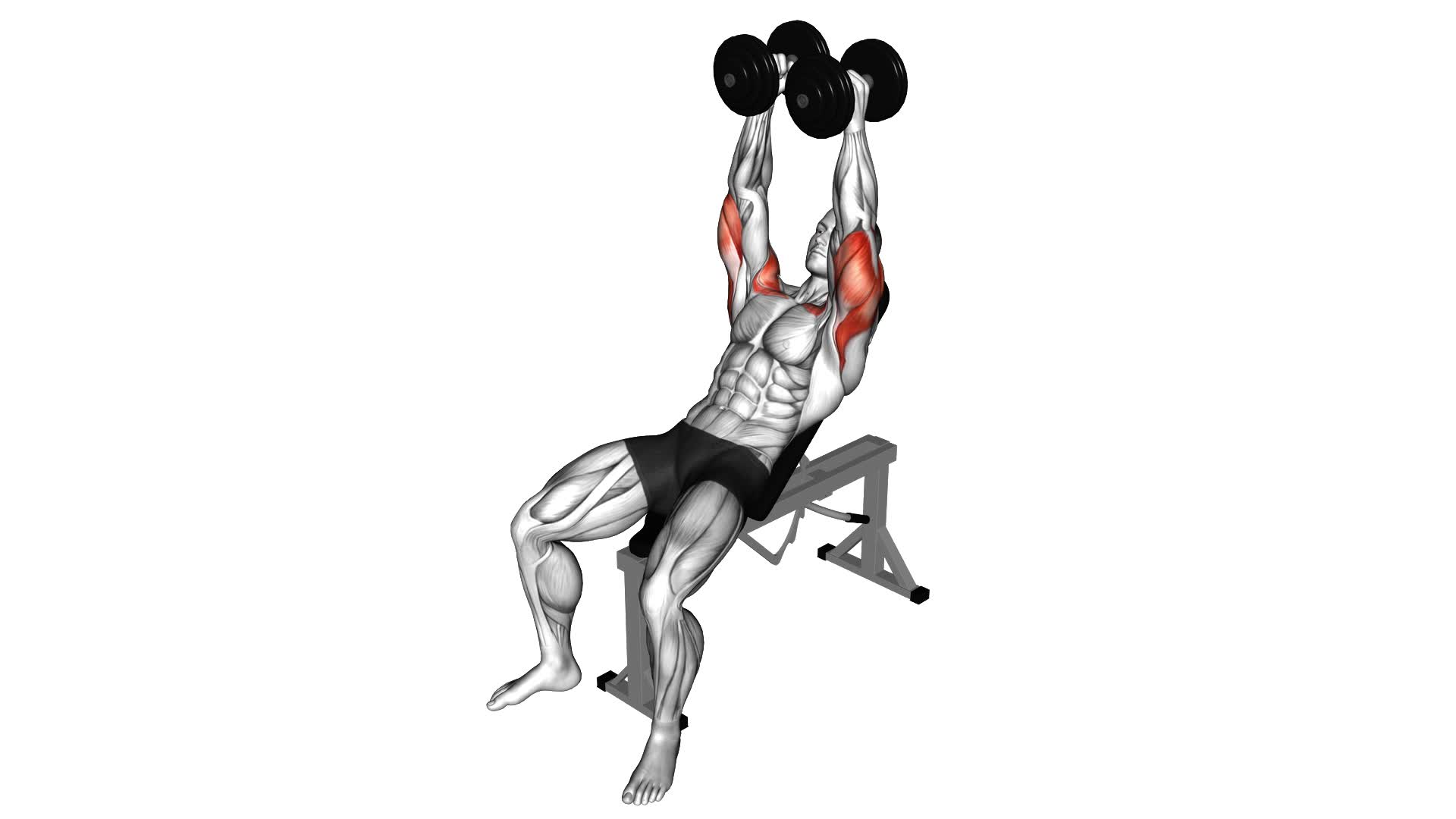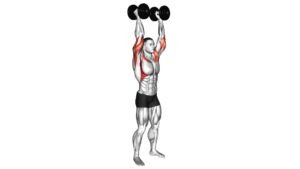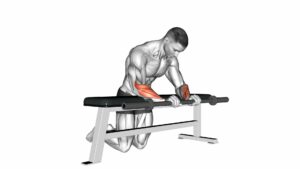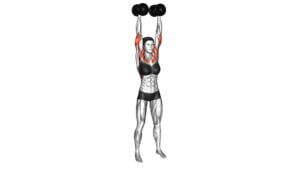Dumbbell Palms-In Incline Bench Press – Video Exercise Guide & Tips

Looking to strengthen your upper body and build muscle?
Watch This Exercise Video
The dumbbell palms-in incline bench press is a fantastic exercise for targeting your chest, shoulders, and triceps.
In this video exercise guide, you'll learn the proper form and technique to maximize your results.
We'll also cover common mistakes to avoid and provide variations for different fitness levels.
Get ready to challenge yourself and take your workout routine to the next level with the dumbbell palms-in incline bench press.
Let's get started!
Key Takeaways
- The Dumbbell Palms-In Incline Bench Press targets multiple muscles in the upper body.
- Proper form and technique, including hand positioning and breathing techniques, are important for maximizing the effectiveness of the exercise.
- Common mistakes to avoid include excessive arching of the back, flaring of the elbows, and using too much weight.
- There are variations and modifications available for different fitness levels, abilities, and injuries, allowing individuals to customize the exercise to suit their specific goals and needs.
Benefits of Dumbbell Palms-In Incline Bench Press
You will experience numerous benefits from incorporating the dumbbell palms-in incline bench press into your workout routine. This exercise targets multiple muscles in your upper body, making it an effective compound movement. The primary muscles worked during the dumbbell palms-in incline bench press are the chest muscles, specifically the pectoralis major and minor. This exercise also engages the anterior deltoids, triceps, and upper back muscles, such as the rhomboids and trapezius.
To progress and increase weight in the exercise, start with a weight that challenges you but allows you to maintain proper form. As you become stronger, gradually increase the weight by small increments, such as 2.5 to 5 pounds. This progressive overload will stimulate muscle growth and strength development over time. Remember to focus on maintaining control and proper technique throughout the movement to maximize the benefits and reduce the risk of injury.
Incorporating the dumbbell palms-in incline bench press into your workout routine will help you build a strong and defined upper body. It's an effective exercise for targeting the chest, shoulders, triceps, and upper back muscles. Now that you understand the benefits of this exercise, let's move on to the next section to learn about the proper form and technique for performing the dumbbell palms-in incline bench press.
Proper Form and Technique for the Exercise
To perform the Dumbbell Palms-In Incline Bench Press with proper form and technique, it's essential to focus on two key points: correct hand positioning and breathing techniques while lifting.
Start by gripping the dumbbells with your palms facing each other, ensuring a firm grasp.
As you lift, exhale during the exertion phase and inhale during the lowering phase, maintaining a controlled breathing pattern throughout the exercise.
Correct Hand Positioning
Ensure proper hand positioning by gripping the dumbbells with a neutral palm-in grip when performing the Dumbbell Palms-In Incline Bench Press. This grip variation is essential for maintaining control and stability throughout the exercise.
To achieve this grip, hold the dumbbells with your palms facing each other and your fingers wrapped around the handles. Avoid excessive wrist flexion and extension by keeping your wrists in a neutral position. This will help prevent strain and injury.
By maintaining a proper hand position, you can effectively target the chest muscles and improve your overall strength.
Now that you have the correct hand positioning, let's move on to the next section to learn about breathing techniques while lifting.
Breathing Techniques While Lifting
Maintain proper breath control to optimize form and technique during the Dumbbell Palms-In Incline Bench Press. Breathing techniques play a crucial role in maximizing muscle activation and ensuring a safe and effective workout.
As you lower the dumbbells, inhale deeply through your nose, filling your lungs with air. This inhalation helps stabilize your torso and prepares your muscles for the exertion ahead.
As you push the dumbbells back up, exhale forcefully through your mouth, engaging your core and generating power. Remember to maintain a steady, controlled breathing pattern throughout the exercise, avoiding any breath-holding or shallow breathing.
Proper breath control not only enhances your performance but also reduces the risk of injury.
Now let's move on to the next section and discuss common mistakes to avoid during the Dumbbell Palms-In Incline Bench Press.
Common Mistakes to Avoid
One common mistake to avoid when performing the dumbbell palms-in incline bench press is using improper form. To ensure you get the most out of this exercise and prevent injury, here are some common mistakes to avoid and ways to improve:
- Arching your back excessively: It's important to maintain a neutral spine throughout the exercise. Avoid arching your back too much, as this can strain your lower back. Instead, engage your core and keep your back flat against the bench.
- Flaring your elbows outwards: Keep your elbows tucked in close to your body throughout the movement. Flaring your elbows outwards not only reduces the effectiveness of the exercise but also puts unnecessary strain on your shoulders. Keep your elbows at a 45-degree angle from your body.
- Using too much weight: Start with a weight that allows you to maintain proper form and technique. Using excessively heavy weights can compromise your form and increase the risk of injury. Gradually increase the weight as you become more comfortable and confident with the exercise.
- Neglecting the full range of motion: Ensure that you fully extend your arms at the top of the movement and bring the dumbbells all the way down to your chest. Avoid shortening the range of motion, as this limits the muscle activation and reduces the effectiveness of the exercise.
Variations and Modifications for Different Fitness Levels
Now that you've mastered the basic form of the dumbbell palms-in incline bench press, it's time to explore variations and modifications that cater to different fitness levels.
Whether you're a beginner looking for more beginner-friendly options, or an advanced lifter seeking to increase the intensity, there are options available for everyone.
Additionally, you can adapt the exercise to suit your individual abilities, ensuring a safe and effective workout.
Beginner-Friendly Modifications
Looking for ways to modify the dumbbell palms-in incline bench press for different fitness levels? If you're a beginner or just starting out, here are some modifications to help you adapt the exercise to your abilities:
- Reduce the weight: Start with lighter dumbbells or even just your body weight to build strength and proper form.
- Decrease the incline: Begin with a lower incline bench or even a flat bench to make the exercise less challenging.
- Use a spotter: Have someone assist you by spotting the weights or providing support during the exercise.
- Focus on technique: Pay attention to your form and make sure you're using the correct muscles. Slow down the movement and concentrate on proper breathing.
Advanced Intensity Options
To increase the intensity of the dumbbell palms-in incline bench press, you can incorporate variations and modifications based on your fitness level.
Advanced modifications and progressive overload techniques can help you challenge your muscles even more and continue to make progress.
One option is to increase the weight of the dumbbells you're using. Gradually adding more weight will increase the resistance and make the exercise more challenging.
Another option is to decrease the incline of the bench. This will shift more of the workload onto your chest muscles and make the exercise more difficult.
You can also try performing the exercise with a slower tempo, focusing on the eccentric (lowering) phase of the movement. This will increase the time under tension and further challenge your muscles.
Remember to always listen to your body and progress at a pace that's appropriate for you.
Adapting for Different Abilities
Increase the intensity of your dumbbell palms-in incline bench press by adapting the exercise to your specific fitness level. Whether you're recovering from an injury or looking to modify the exercise for strength training, there are several options available to suit your needs.
Here are four variations and modifications to consider:
- Adapting for injuries:
- Decrease the weight or use resistance bands to reduce strain on the injured area.
- Adjust the incline angle to a more comfortable position.
- Modifying for strength training:
- Increase the weight gradually to challenge your muscles.
- Increase the incline angle for a greater emphasis on the upper chest muscles.
Remember to always consult with a healthcare professional or fitness instructor before making any modifications or adaptations to your exercise routine. By customizing the dumbbell palms-in incline bench press, you can effectively target your specific fitness goals while minimizing the risk of injury.
Tips for Increasing the Intensity and Challenge
To maximize the intensity and challenge of the Dumbbell Palms-In Incline Bench Press, incorporate these tips into your workout routine.
- Focus on increasing resistance. Gradually add more weight to each dumbbell as you become stronger and more comfortable with the exercise. This will help you build muscle and improve overall strength.
- Consider incorporating supersets into your routine. Supersets involve performing two exercises back-to-back with little to no rest in between. For example, you can pair the Dumbbell Palms-In Incline Bench Press with another upper body exercise, such as the Dumbbell Shoulder Press. This won't only increase the intensity of your workout but also save you time.
By challenging your muscles with increased resistance and incorporating supersets, you'll push yourself to new limits and achieve greater results.
Now that you have learned how to increase the intensity and challenge of the Dumbbell Palms-In Incline Bench Press, it's time to explore how to incorporate this exercise into your workout routine.
Incorporating Dumbbell Palms-In Incline Bench Press Into Your Workout Routine
To incorporate the Dumbbell Palms-In Incline Bench Press into your workout routine, focus on using proper form and gradually increasing the weight. This exercise targets your upper chest, shoulders, and triceps, helping you build strength and muscle definition.
Here's how you can effectively incorporate the Dumbbell Palms-In Incline Bench Press into your routine:
- Warm up: Begin your workout with a dynamic warm-up to increase blood flow and prepare your muscles for exercise. This can include arm circles, shoulder rolls, and light chest stretches.
- Proper form: Lie on an incline bench with a dumbbell in each hand, palms facing inward. Lower the dumbbells to the sides of your chest while keeping your elbows at a 45-degree angle. Press the dumbbells back up, extending your arms fully.
- Gradually increase weight: Start with a weight that allows you to perform 8-12 reps with proper form. As you get stronger, gradually increase the weight while maintaining proper form and control.
- Incorporate into your routine: Include the Dumbbell Palms-In Incline Bench Press in your chest or upper body workout routine 2-3 times per week. Alternate it with other chest exercises like push-ups or dumbbell flyes to ensure balanced muscle development.
Frequently Asked Questions
How Many Sets and Reps Should I Do for the Dumbbell Palms-In Incline Bench Press?
To determine the sets and reps for the dumbbell palms-in incline bench press, you need to consider your fitness goals and current fitness level. Generally, it's recommended to start with 3-4 sets of 8-12 reps. However, you can adjust this based on your preferences and abilities.
Remember to maintain proper form and technique throughout the exercise. If you're looking for alternatives, consider the regular dumbbell incline bench press or barbell incline bench press.
Can I Use a Barbell Instead of Dumbbells for This Exercise?
Yes, you can use a barbell instead of dumbbells for the dumbbell palms-in incline bench press exercise. This exercise is typically done with dumbbells, but using a barbell is an alternative equipment option.
Keep in mind that using dumbbells allows for a greater range of motion and requires more stabilization from your muscles, while using a barbell may allow you to lift heavier weights.
Both options have their own benefits, so choose the one that suits your preferences and goals.
Is It Necessary to Have an Incline Bench for This Exercise, or Can I Do It on a Flat Bench?
Yes, you can do the exercise on a flat bench instead of an incline bench.
However, using an incline bench has its benefits. It targets the upper chest muscles more effectively compared to the flat bench press.
Additionally, there are variations of incline bench press exercises that you can try to add variety to your workout routine and engage different muscle groups.
Can I Do the Dumbbell Palms-In Incline Bench Press if I Have Shoulder or Wrist Pain?
If you're experiencing shoulder or wrist pain, it's important to modify your workout routine.
The dumbbell palms-in incline bench press may aggravate your pain, so it's best to find alternative exercises that won't put strain on those areas.
Consult with a fitness professional or physical therapist to get specific modifications that suit your needs.
How Long Should I Rest Between Sets When Performing This Exercise?
When performing the dumbbell palms-in incline bench press, it's important to consider how long you should rest between sets. Resting time between sets can vary depending on your fitness level and goals.
Generally, a good starting point is to rest for about 1-2 minutes between sets. This allows your muscles to recover and replenish energy, improving your overall performance and maximizing the benefits of the exercise.
Remember to listen to your body and adjust the resting time as needed.
Conclusion
In conclusion, the dumbbell palms-in incline bench press is a valuable exercise that targets the chest, shoulders, and triceps. By following proper form and technique, avoiding common mistakes, and incorporating variations, you can effectively increase strength and muscle growth.
Adding this exercise to your workout routine will help you achieve your fitness goals and improve upper body strength. Remember to start with lighter weights and gradually increase intensity for optimal results.

Author
Years ago, the spark of my life’s passion ignited in my mind the moment I stepped into the local gym for the first time. The inaugural bead of perspiration, the initial endeavor, the very first surge of endorphins, and a sense of pride that washed over me post-workout marked the beginning of my deep-seated interest in strength sports, fitness, and sports nutrition. This very curiosity blossomed rapidly into a profound fascination, propelling me to earn a Master’s degree in Physical Education from the Academy of Physical Education in Krakow, followed by a Sports Manager diploma from the Jagiellonian University. My journey of growth led me to gain more specialized qualifications, such as being a certified personal trainer with a focus on sports dietetics, a lifeguard, and an instructor for wellness and corrective gymnastics. Theoretical knowledge paired seamlessly with practical experience, reinforcing my belief that the transformation of individuals under my guidance was also a reflection of my personal growth. This belief holds true even today. Each day, I strive to push the boundaries and explore new realms. These realms gently elevate me to greater heights. The unique combination of passion for my field and the continuous quest for growth fuels my drive to break new ground.







